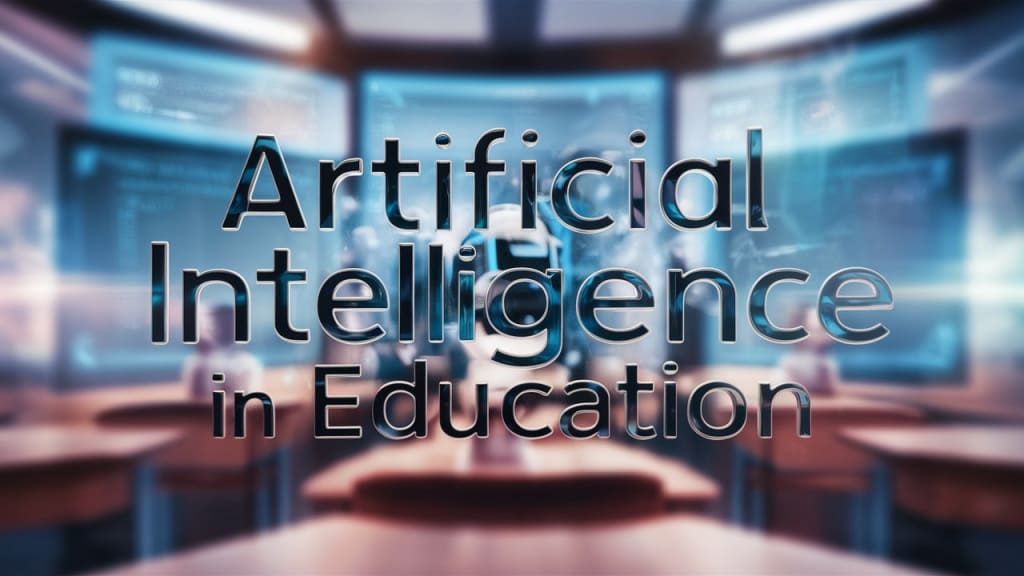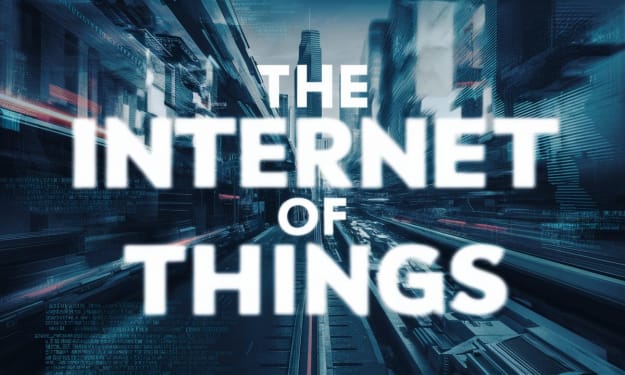Artificial Intelligence in Education: Tailoring Learning for Everyone
How AI is Revolutionizing Personalized Education and Enhancing Student Success

Introduction
Education is undergoing a significant transformation, thanks to the integration of artificial intelligence (AI). This powerful technology is making it possible to personalize learning experiences for students of all ages, abilities, and backgrounds. By analyzing data and adapting to individual needs, AI is helping educators create customized learning paths that maximize each student's potential. In this article, we'll explore how AI is reshaping education, making it more personalized, efficient, and accessible.
Click Here to Elevate Your Business with Superior Dropshipping Solutions!
Understanding AI in Education
Artificial intelligence (AI) refers to the ability of machines to perform tasks that typically require human intelligence. In the context of education, AI systems can analyze vast amounts of data, recognize patterns, and make decisions that enhance teaching and learning.
Key Components of AI in Education
Machine Learning: AI systems learn from data and improve their performance over time without explicit programming.
Natural Language Processing (NLP): AI can understand and respond to human language, making it possible to develop intelligent tutoring systems and virtual assistants.
Adaptive Learning Technologies: These systems adjust content and instruction based on each student's performance and learning style.
Personalized Learning with AI
One of the most significant benefits of AI in education is its ability to personalize learning. Traditional education often adopts a one-size-fits-all approach, which may not address the unique needs of every student. AI changes this by offering customized learning experiences.
Adaptive Learning Platforms
Adaptive learning platforms use AI to tailor educational content to each student's needs. By analyzing data on how students interact with the material, these platforms adjust the difficulty level, offer additional resources, and provide personalized feedback.
Benefits of Adaptive Learning:
Customized Learning Paths: Each student receives a unique learning journey tailored to their strengths, weaknesses, and pace.
Immediate Feedback: Students get instant feedback on their performance, helping them understand mistakes and learn more effectively.
Enhanced Engagement: Personalized content keeps students engaged and motivated, leading to better learning outcomes.
Intelligent Tutoring Systems
Intelligent tutoring systems (ITS) are AI-powered tools that provide one-on-one tutoring to students. These systems simulate human tutors by understanding student needs and offering personalized instruction and support.
Examples of ITS:
MATHia: An AI tutor for mathematics that provides step-by-step guidance and adapts to each student's learning progress.
Duolingo: A language learning platform that uses AI to personalize lessons and practice exercises based on user performance.
Virtual Classrooms and AI Teaching Assistants
AI is also enhancing virtual classrooms and online learning environments by providing intelligent teaching assistants that support both students and educators.
Functions of AI Teaching Assistants:
Answering Questions: AI assistants can handle routine inquiries, allowing teachers to focus on more complex tasks.
Grading and Assessment: AI can automate grading for multiple-choice and short-answer questions, providing immediate feedback to students.
Resource Recommendations: AI systems suggest additional resources and activities based on individual learning needs and preferences.
Enhancing Accessibility and Inclusivity
AI is making education more inclusive and accessible, ensuring that all students, regardless of their abilities or backgrounds, have equal opportunities to succeed.
Assistive Technologies for Students with Disabilities
AI-powered assistive technologies help students with disabilities overcome learning barriers and participate fully in educational activities.
Examples of Assistive Technologies:
Speech Recognition Software: Tools like Dragon NaturallySpeaking convert speech to text, aiding students with physical disabilities or learning difficulties.
Text-to-Speech (TTS) Systems: AI-driven TTS systems, such as Kurzweil 3000, read digital text aloud, assisting students with visual impairments or reading challenges.
AI-Powered Learning Apps: Apps like Microsoft Learning Tools provide features such as immersive reading and dictation, supporting students with dyslexia and other learning disabilities.
Language Translation and Cultural Adaptation
AI is breaking down language barriers in education, making it easier for non-native speakers to access educational content and participate in global learning communities.
Functions of AI in Language Translation:
Real-Time Translation: Tools like Google Translate offer real-time translation of text and speech, facilitating communication in multilingual classrooms.
Cultural Adaptation: AI systems can adapt educational content to align with the cultural contexts of different student groups, making learning more relevant and engaging.
Click Here to Elevate Your Business with Superior Dropshipping Solutions!
Improving Teacher Effectiveness
AI is not just beneficial for students; it also enhances the effectiveness of teachers by providing valuable insights, automating administrative tasks, and offering professional development opportunities.
Data-Driven Insights
AI systems analyze data on student performance and behavior, providing teachers with actionable insights to improve instruction and support student success.
Examples of Data-Driven Insights:
Identifying Learning Gaps: AI can identify areas where students struggle and recommend targeted interventions to address these gaps.
Predicting Student Outcomes: AI models can predict student performance and identify those at risk of falling behind, enabling early interventions.
Optimizing Curriculum: By analyzing data on student engagement and outcomes, AI can help educators refine and optimize curriculum and instructional strategies.
Automating Administrative Tasks
AI helps teachers save time and reduce workload by automating routine administrative tasks, allowing them to focus more on teaching and student interaction.
Examples of Automated Tasks:
Grading and Feedback: AI systems can grade assignments, quizzes, and exams, providing instant feedback to students.
Attendance Tracking: AI-powered tools can automate attendance tracking, reducing administrative burden on teachers.
Lesson Planning: AI can assist in creating lesson plans by suggesting relevant resources and activities based on curriculum standards and student needs.
Professional Development
AI offers personalized professional development opportunities for teachers, helping them stay updated with the latest educational practices and technologies.
Examples of AI-Powered Professional Development:
Online Courses and Workshops: AI-driven platforms recommend courses and workshops based on teachers' interests and professional goals.
Virtual Coaching: AI provides virtual coaching and mentorship, offering personalized feedback and support to teachers.
Challenges and Considerations
While AI holds immense potential for transforming education, it also presents several challenges and considerations that need to be addressed.
Data Privacy and Security
The use of AI in education involves the collection and analysis of large amounts of student data, raising concerns about privacy and security.
Solutions:
Data Encryption: Implementing strong encryption methods to protect data from unauthorized access.
Privacy Policies: Establishing clear policies and guidelines on data collection, use, and sharing to ensure student privacy.
Bias and Fairness
AI systems can perpetuate biases present in the data they are trained on, leading to unfair outcomes for certain student groups.
Solutions:
Bias Detection: Regularly auditing AI systems to detect and mitigate biases in data and algorithms.
Inclusive Training Data: Ensuring that AI models are trained on diverse and representative datasets to promote fairness.
Teacher and Student Adaptation
Adapting to AI-powered tools and technologies can be challenging for teachers and students, particularly those with limited technical skills.
Solutions:
Training and Support: Providing comprehensive training and ongoing support to help teachers and students effectively use AI tools.
User-Friendly Design: Designing AI-powered educational tools with intuitive interfaces and user-friendly features.
The Future of AI in Education
The future of AI in education looks promising, with ongoing advancements in technology and increasing adoption across educational institutions.
AI-Enhanced Learning Environments
AI will continue to enhance learning environments, making them more interactive, immersive, and engaging for students.
Lifelong Learning and Career Development
AI will support lifelong learning and career development by offering personalized learning pathways and skills training tailored to individual career goals and market demands.
Global Collaboration and Knowledge Sharing
AI will facilitate global collaboration and knowledge sharing, breaking down geographical barriers and creating a connected global education community.
Click Here to Elevate Your Business with Superior Dropshipping Solutions!
Conclusion
Artificial intelligence is transforming education, making learning more personalized, accessible, and effective for all. By leveraging AI technologies, educators can tailor instruction to meet the unique needs of each student, enhancing engagement and improving outcomes. As we continue to embrace AI in education, it's crucial to address challenges related to privacy, bias, and adaptation to ensure that these technologies benefit everyone. The future of education powered by AI promises to be exciting, innovative, and inclusive, offering new opportunities for students and educators alike. By harnessing the power of AI, we can create a smarter, more connected, and equitable world of learning.
About the Creator
Enjoyed the story? Support the Creator.
Subscribe for free to receive all their stories in your feed. You could also pledge your support or give them a one-off tip, letting them know you appreciate their work.






Comments
There are no comments for this story
Be the first to respond and start the conversation.